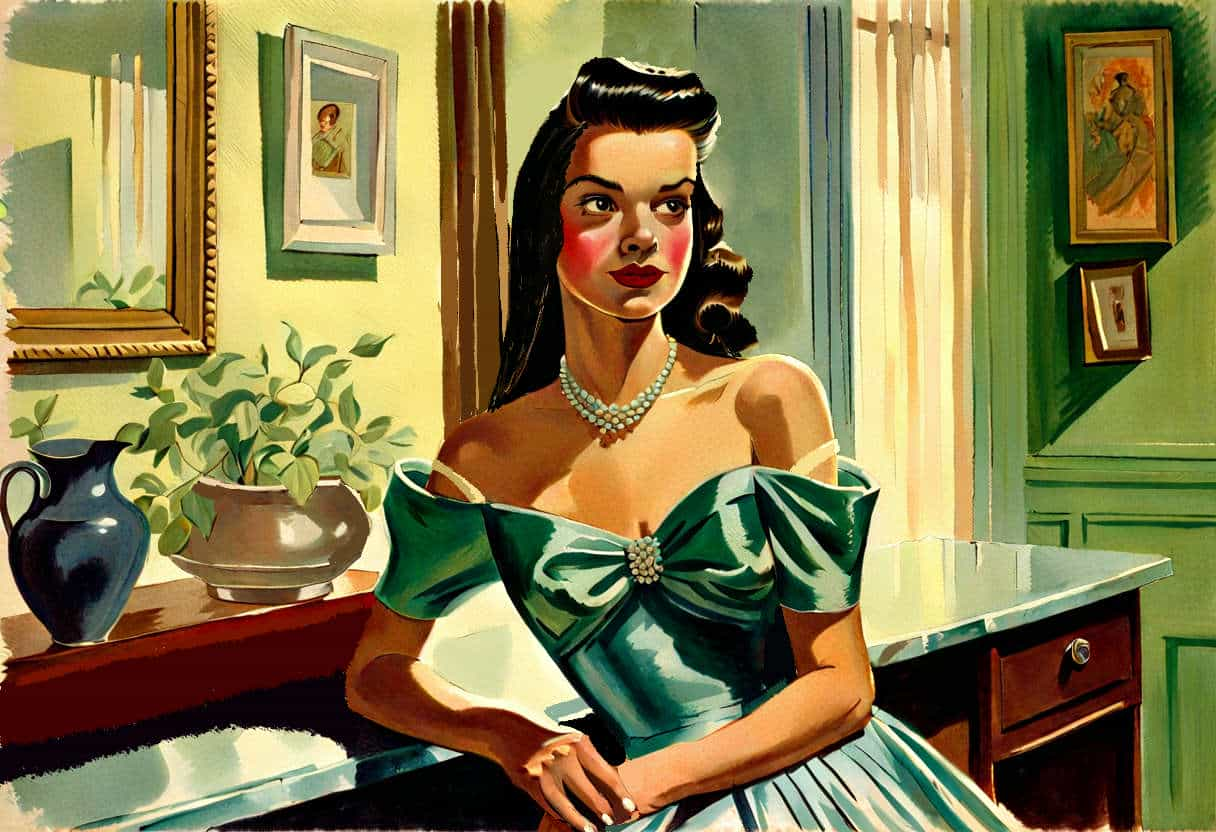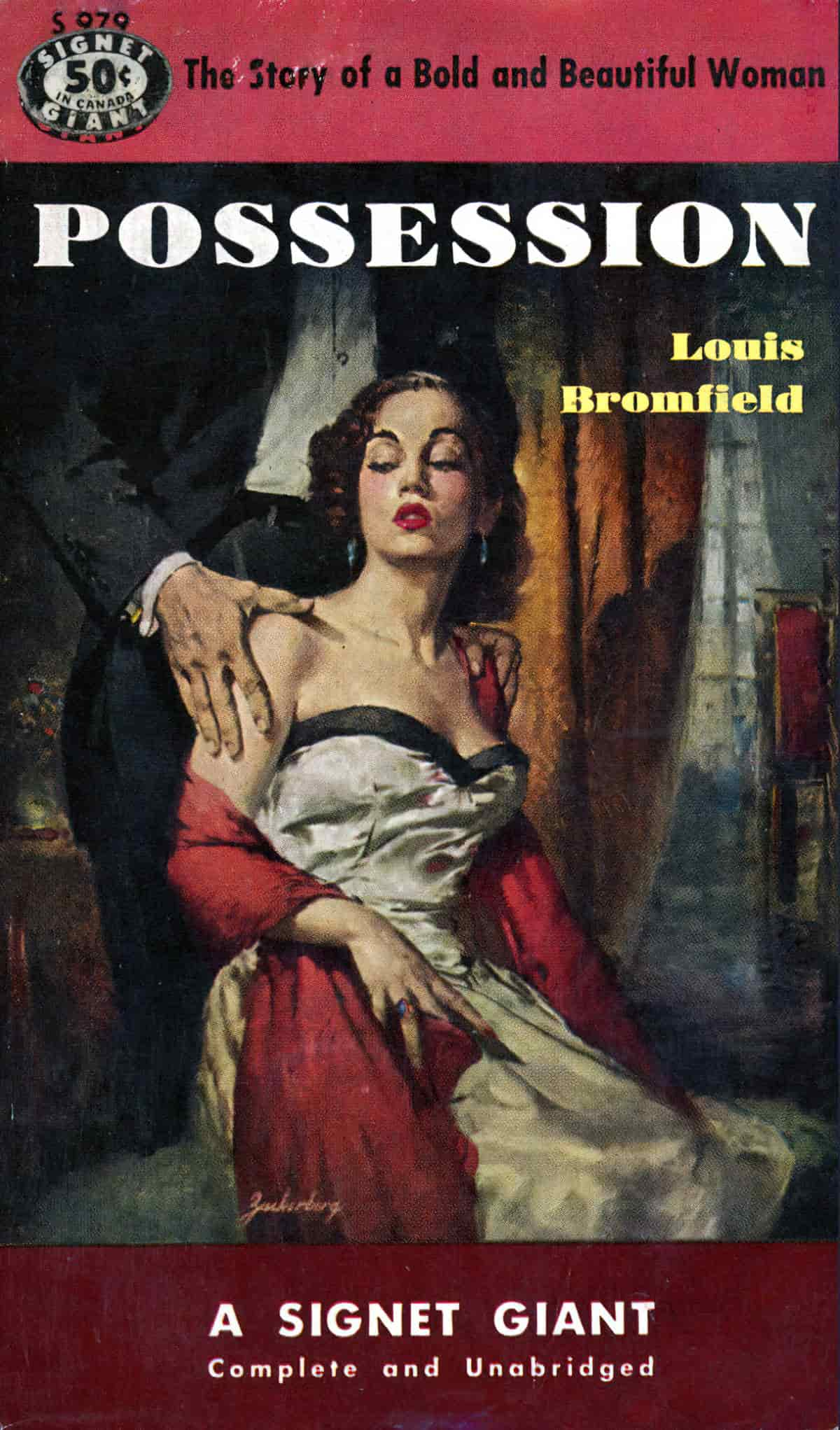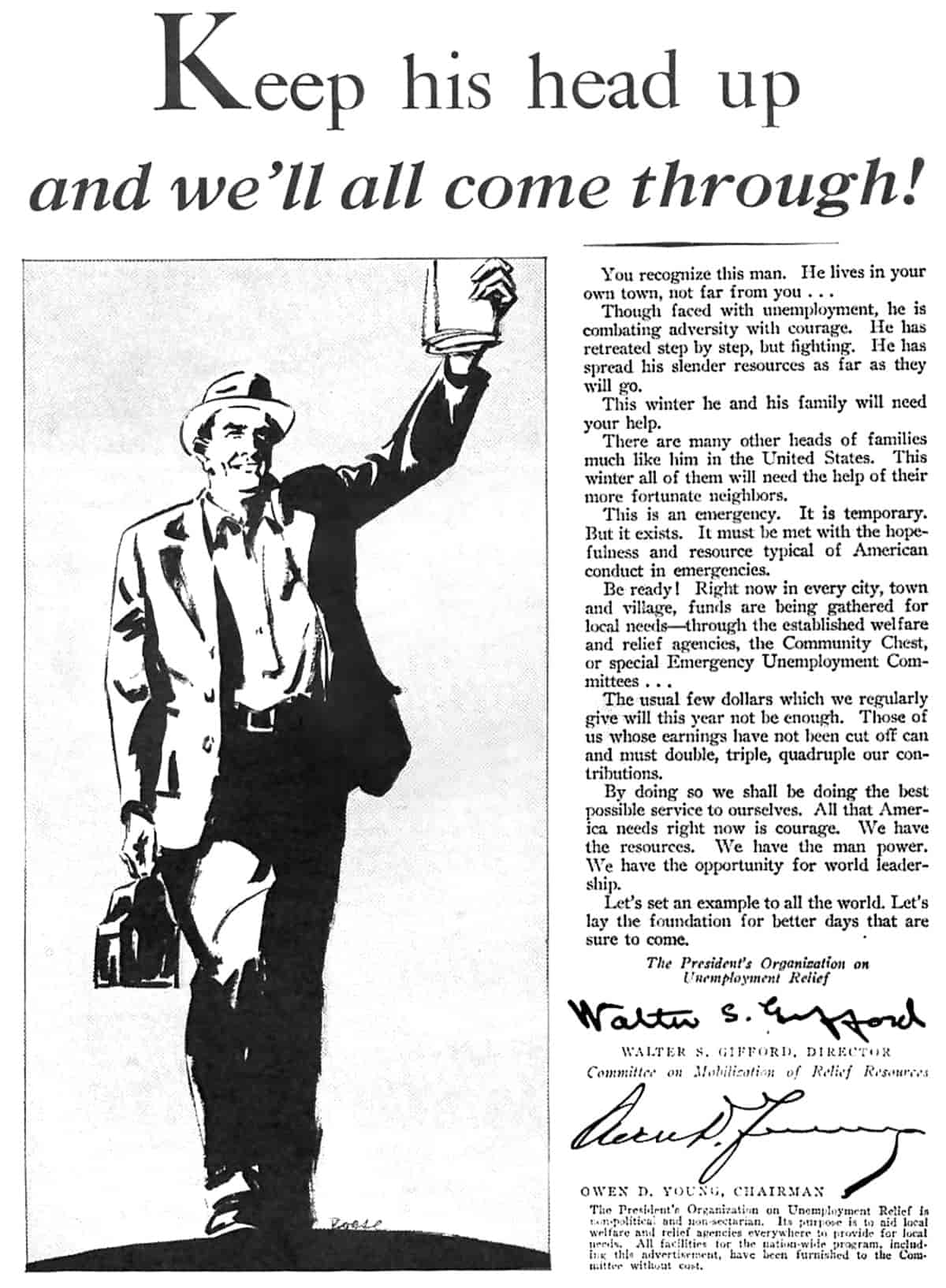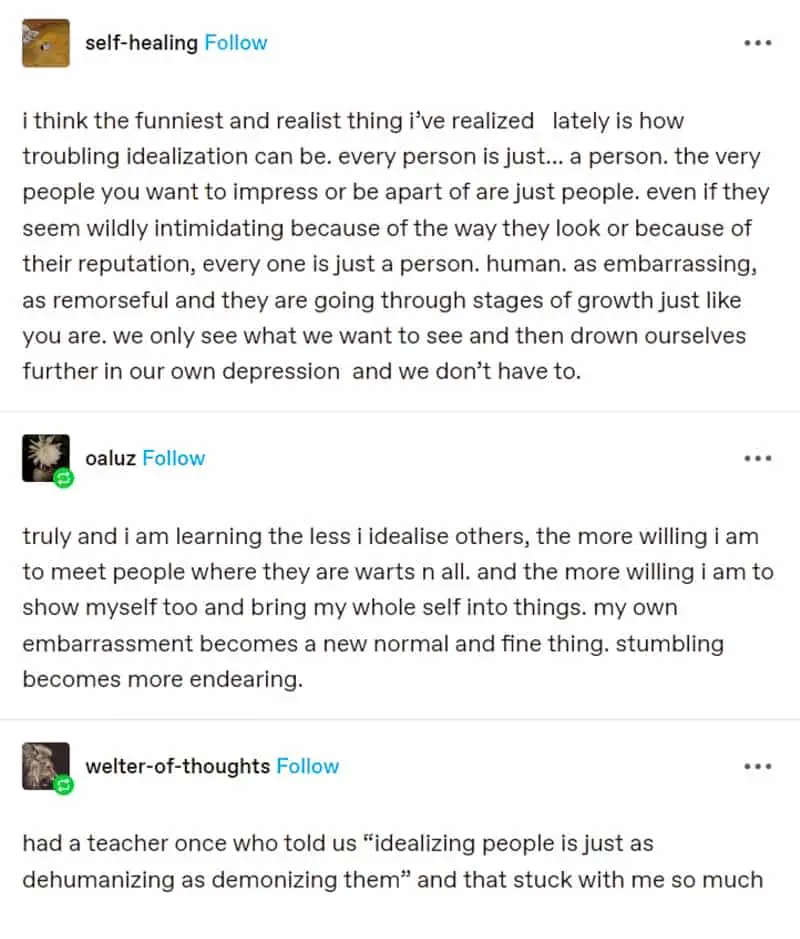**UPDATE LATE 2024**
After Alice Munro died, we learned about the real ‘open secrets’ (not so open to those of us not in the loop) which dominated the author’s life. We must now find a way to live with the reality that Munro’s work reads very differently after knowing certain decisions she made when faced with a moral dilemma.
For more information:
My stepfather sexually abused me when I was a child. My mother, Alice Munro, chose to stay with him from the Toronto Star
Before Alice Munro’s husband sexually abused his stepdaughter, he targeted another 9-year-old girl. ‘It was a textbook case of grooming’ from the Toronto Star
So, now what?
Various authors on CBC talk about what to do with the work of Alice Munro
And here is a brilliant, nuanced article by author Brandon Taylor at his Substack: what i’m doing about alice munro: why i hate art monster discourse
The narrator of “How I Met My Husband” has a different voice from most other characters by Canadian author Alice Munro. Unlike woman characters such as Del Jordan (Lives of Girls and Women), and also unlike Munro herself (high school dux, a university scholarship), the narrator of this story is not the academically gifted type. Edie is, however, gifted in running a household and also increasingly adept at understanding social situations. We meet her when she is young; we meet her again as a plump older housewife narrating this tale of her teenage years with plenty of humour and just the right amount of pathos.
Alice Munro never talks down to anyone, and “How I Met My Husband” evinces this particular skill. All of Munro’s character archetypes are equally complex.
DISCUSSION QUESTIONS FOR “HOW I MET MY HUSBAND” BY ALICE MUNRO
- Describe the narration of “How I Met My Husband”. Who is talking? How would you describe her voice? Who do you imagine as Edie’s interlocutor/audience?
- When is this story set and how can you tell?
- Describe the social hierarchy of “The Fifth Line”, a gentrifying rural locality somewhere in rural Ontario. Which characters represent each social group?
- Aside from the reasons she states herself, what other cultural forces of the era conspired to make young Edie uninterested in school work? What does she desire for her own future?
- Dr Peebles picks up that 15-year-old Edie is smart, and he is correct. Readers will also see that Edie is a perceptive girl. How does Alice Munro show us this? And what does Dr Peebles mean when he says ‘smart’?
- Smarts aside, Edie is still a 15-year-old girl, and there is information she hasn’t had access to during her well-mannered, country life. This makes her vulnerable. How does Alice Munro show readers Edie’s youthful naivety?
- Why does Edie take Chris the cake?
- Why do you think Mrs Peebles understands what really happened when Edie visited Chris’s tent even though Alice and Loretta both got it wrong?
- To what extent do you think the older Edie is reliable narrator of her own story? How does Alice Munro guide readers in gauging her reliability as a storyteller?
- We all half-know things, and this human tendency is explored by various writers including Alice Munro via fiction. At the end of the story, Edie says she likes for people to think what pleases them and makes them happy. Alice Munro has introduced us to various characters who all think certain things — untrue things — and come to their own conclusion. Are those characters happy because of their wrong thinking?
WOMAN ARCHETYPES IN THE WORK OF ALICE MUNRO
I see a similar voice in another of Munro’s works: “Forgiveness in Families”. For the sake of simplicity, let’s divide Munro’s women into three main types:
- The smart, reflective woman, sometimes old, sometimes young (the Del Jordan stories, including “Winter Wind” and “The Found Boat“.) These young women are smart from a very young age.
- The reflective older woman who was less savvy in her youth (“An Ounce of Cure“, “The Turkey Season“, “Wigtime“). Her wisdom has come with age, though she was never dux of her class in high school.
- The less educated woman who dives headfirst into situations, is comically/tragically caught out at some point, and still pretty spirited about the whole thing. By the telling of the story, she’s getting riled up. (“Postcard“). These women are driven by their passions and are less inhibited. They’re fun. They see irony and humour in difficult situations, even while still pained by events from their distant past. Like the older narrator of “How I Met My Husband”, they can look at their younger, more beautiful but more naïve selves and see a different person. Life has taught them a lot.
I don’t mean to suggest that these categories are fixed and exclusive. For instance, the woman of “Forgiveness in Families” sits somewhere between 2 and 3 in that she almost gets at something wise and true, but not quite. She remains simply annoyed about the preferential treatment dished out by their mother to her hapless brother. The narrator of “Material” sits here, too.
The less educated and reflective characters of type 3 are sometimes depicted by a more thoughtful unseen narrator: “The Time of Death“, “Thanks for the Ride” and “A Trip to the Coast“. Omniscience, or at least another perspective, is of benefit in this type of story. ‘Omniscience’ is one of those words which means different things to different people. In the work of Alice Munro, a degree of omniscience can come from the first person perspective of a woman who has acquired wisdom with age and experience.
Edie, the narrator of “How I Met My Husband” is this third type of woman. She speaks in her own conversational voice which reminds me of sitting down to talk with older woman relatives in my own family. There’s a generation of women who took pride in their ability to run a household — a pride which is now, ironically, shamed. Women are still supposed to keep a nice home, but are now shamed for making that an overt focus in their life.

In this story, Edie tells us a secret. Her husband doesn’t realise the truth about how they met. It would only hurt to tell him the full truth, so she confides to us, instead. We might be the woman who just moved into the neighbourhood. We might be sat next to her on the coach to Toronto…
SETTING OF “HOW I MET MY HUSBAND
RURAL CANADA
The Peebles live at a place called the Fifth Line, opposite where the Fairgrounds used to be. Significantly, the country fair would have once been a focal point for the local community of farmers, but has since either moved or shut down. The life of farmers has literally changed with the arrival of people like the Peebles.
An address that includes terms like “Fifth Line” or “Fourth Line” is typically a reference to a specific road or street in some rural and suburban areas, particularly in parts of Canada. These lines are often used to divide and name the different concession roads or lots in agricultural or rural regions. Each line is essentially a road or path, and they are numbered sequentially.
In such cases, an address might look something like “123 Fourth Line” or “456 Fifth Line.” If you come across an address with “Fifth Line” or similar wording, it’s a sign that the location is likely in a rural or semi-rural setting.
In my home countries of Aotearoa New Zealand and Australia, RD is similar. RD stands for “rural delivery” and the number indicates how many kilometres from the nearest intersection. So if you’re trying to find a rural address, you have to set your odometer.
EARLY 1950S
I believe this story was set in 1953 or 1954. We are told that it’s after the War, and also that Mrs Peebles has a washer dryer. Assuming the narrator means a washer and dryer machine in the same unit, the first of those appliances was released in 1953 by Bendix Home Appliances. They didn’t really take off, at least not in Canada, because an appliance which purports to do everything actually does nothing really well. Washer-dryer units only take small loads and spend three times as long to do a worse job of both washing and drying.
Due to the climate, Canadians really do need a dryer over winter that will properly dry their garments. Also, outside the cities, Canadian homes are relatively large. Most houses are built with enough room for a separate washer and dryer.
NARRATION
Different people use different terminology to describe narration and point of view. I mix them all up as I see fit. Today let’s use the terminology of children’s author Wallace Hildick, who called this kind of narration “Listen while I tell you”. First person, past tense. Somebody is telling us a story. Importantly, we feel as if someone is talking to us. The words are written as spoken.
This is never literally the case, as anyone who has ever studied linguistics and transcribed real speech can attest. With the exception of gifted orators, real speech is all over the show, impossible to read smoothly.
Anyway, this style of narration lets the character’s voice shine through. We know much about Edie just from ‘hearing her talk’.
“HOW I MET MY HUSBAND” ANALYSIS
Edie was raised on a farm in rural Ontario — a life with its own specific set of country customs and manners. When she stopped achieving academically, she was withdrawn from high school and sent out to work as a housemaid. Her first job was working for Dr Peebles, the vet who would visit her family’s farm.
THE PEEBLES: RICH BUT NOT NASTY
The Peebles have two children and a new 1950s house with all the mod-cons of the era. For farm bred Edie, keeping this modern house is a breeze. She also helps with the children. This all goes very well. In stories we are accustomed to wealthy people being mean to their staff, wielding power where they shouldn’t. Alice Munro is nowhere near as basic as that. Even in a story like “Sunday Afternoon“, also about a young and vulnerable housemaid, she injects nuance. Far more often, the relationship between employers and staff is multi-faceted.
Young Edie enjoys the luxury of taking a hot bath once a week in the beautiful, well-equipped bathroom.
Edie’s wish in life is to marry and have children of her own. For now, she likes to imagine herself living as lady of the Peebles’ house. Sometimes, when everyone is out, she goes into Mrs Peebles’ wardrobe and admires the older woman’s clothes.
One hot summer’s day, she dares to try one of the dresses on. She puts on make-up, pins up her hair, pours herself a glass of ginger ale.

THE FETCHING PILOT LOVE INTEREST
A knock at the door. Oh no. She might be in trouble. But it’s that pilot.
The small town has been fascinated and excited when this pilot descended in their town and set up a small business offering plane rides. His name is Chris Watters. He charges one dollar for adults and fifty cents for kids.
He has set up this business right across the road from the Peebles’ property. Edie is the first local he meets when he comes to the farm to ask for permission to use the Peebles’ water pump.
He tells Edie she looks very nice, and never tells on her.
You might be wondering at this point if Edie’s dressing-up secret is ever going to come out. It’s basically a rule of storytelling: Where a character has a secret or transgresses in some way (i.e. wears a ‘mask’), the truth will be revealed. If authors break this rule, they’re subverting audience expectations and it’s very difficult to pull off an ending which satisfies the readers.
As we’ll see, Alice Munro manages this narrative problem by coming in obliquely, landing like an expert pilot in high wind.
Grateful for the secret kept, and attracted to this man in her hormone-driven fifteen-year-old way, Edie spends more and more time over in the field in the pilot’s company. One day, inevitably, they kiss.
ENTER: THE GOSSIP
A comical story can always often benefit from a gossiping busybody archetype, and so can any drama. Loretta Bird is our Rachel Lynde sh!t-stirrer character in this one.

Loretta has seven children, a drunkard for a husband, poor finances, and probably involves herself in other people’s lives by means of escaping from the miseries of her own. Even as a 15-year-old, Edie has more social prowess than Loretta. Whereas Edie is ‘not academic’ (prudently so), Loretta really is quite simple. Loretta doesn’t seem to understand the difference between observed reality and the parts of a story she makes up entirely by herself.
THE EARLY 1950S RURAL CLASS SYSTEM
Munro’s narrator draws a distinction between three distinct groups of people who live outside the towns:
- The farmers
- The long-term poor
- Newcomers who have purchased what we now call lifestyle blocks (at least, that’s what they’re called in Australia)
The 15-year-old narrator comes from a ‘true’ farming family. She knows hard work, and finds the appliances and luxury of her employers a doddle compared to the hard graft of housework she’s used to.
The Peebles are wealthy newcomers.
Catholic Loretta with all the children wouldn’t normally have associated with people like the Peebles, except as a patient, so it’s novel for her to live side-by-side with people of a wealthier class. The Peebles fascinate her, and she plies Edie for prurient details about their lives.
Loretta does not interest the Peebles in the same way. The Peebles lump all rural people into the same class — a distinction which fifteen-year-old Edie understands well. Edie has been brought up with specifically country manners. Her mother would never be caught accepting visitors without a pie on hand. Things like this elevate her to the higher ‘farming class’ or rural dwellers.
But even as a young woman, Edie understands that city folk are different. Mrs Peebles doesn’t need to impress with a pie. She can simply offer food from a can because everything else about her is impressive.
This reminds me of the minor pushback that happened when a prominent Australian feminist (who I respect very much) wrote a newspaper column urging mothers to make their collective lives easier by refusing to spend precious personal time preparing for birthday parties and bake sales. There’s nothing wrong with offering a supermarket cake at a birthday party, she wrote. The pushback came from other feminists who pointed out that if one is already of the monied class, with nice clothes and a nice car, the choice to offer supermarket cake at a children’s birthday party will be seen as a choice, and as a feminist statement. But single, poor and marginalised mothers don’t get that luxury. For those mothers, providing an elaborate, homemade birthday cake may be one of the few opportunities she gets to show she’s ‘coping’, and ‘A Good Mum’.
EDIE’S perspicacity
The paragraph below illustrates beautifully how Edie is observant and emotionally intelligent without being poetic, at least not in the way Alice Munro is capable of being poetic. Edie makes a shrewd observation, even at the age of 15, though she understands her thoughts are not fully formed (“And why was that?”) and she also understands the limited imagination of the wealthy. This indicates a great capacity for theory of mind:
Sometimes I thought about the way we lived out at home and the way we lived here and how one way was so hard to imagine when you were living the other way. But I thought it was still a lot easier, living the way we lived at home, to picture something like this, the painted flamingos and the warmth and the soft mat, than it was for anybody knowing only things like this to picture how it was the other way. And why was that?
“How I Met My Husband”
Imagination is more important than knowledge. Knowledge is limited. Imagination encircles the world.
Albert Einstein, because imagination is an underappreciated form of intelligence not easily measurable by the education system
Edie is capable of nuanced thinking. Although she doesn’t think Mrs Peebles will fire her once she finds out Edie has been trying on her dresses, she knows things would never be the same. This is because wealthy employers don’t consider their employees fully human. Employees, no matter how well they are treated, are best when they are automatons.
[People you work for] like to think you’re not curious, not just that you aren’t dishonest, that isn’t enough. They like to think you don’t notice things, that you don’t think or wonder about anything but what they like to eat and how they like things ironed, and so on.
“How I Met My Husband”
We realise now that Mr Peebles picked Edie for the job of child-minder and housemaid because she scored 37% in her school exams, not in spite of it. When he said, “You look perfectly intelligent to me,” he meant that he wanted someone who did not have her own life of the mind.
If Mrs Peebles found out that Edie had been trying on her clothes, it’s not the clothes she would be upset about. After all, Edie put them back in perfect condition, and she’s not precious about her bathroom supplies, so surely she wouldn’t mind that Edie had been getting into her cosmetics. The disturbing thing for Mrs Peebles would be forced acknowledgement of Edie’s humanity. Edie, too, imagines herself dressed up, living another life. She has aspirations of her own, and an imagination which wanders beyond the bounds of the house she is required to clean.
THE GOOD GIRL, BAD GIRL DICHOTOMY
Here’s another feature of the Gossiping Busybody Archetype: She’s judgemental, and conservative. This one is a binary thinker and emotionally unintelligent, especially considering her age. Unable to reflect on complex ideas, she will never fully mature.
Alice Munro has given us enough information about Loretta for us to understand that she is Catholic. (All the kids.) In most religious communities, where binary thinking flourishes, women are considered temptresses, men their helpless victims. (Adam and Eve.)
Loretta Bird believes with her whole heart that if a teenage girl is associating with a man, that girl must be having sex with him. But as Alice Kelling’s reflection character, instead of blaming young Edie, she blames the man. “Men are all the same.” This speaks more to her own very limited experience of men (a drunkard) than it does to anyone else’s.
MRS PEEBLES
Only Mrs Peebles has the capacity to see what happened. Alice Munro masterfully showed readers that Mrs Peebles has her own place in this patriarchal society, and is not fully in control of her own destiny. We’ve been given numerous evidence in this regard, each of them easy to skip over on first read:
- It was Mr Peebles who hired Edie after attending to an animal at Edie’s family farm. He hired Edie spontaneously, without consulting his wife first.
- It was Mr Peebles who wanted to move to the country. Mrs Peebles would prefer the city but is forced to live a country lifestyle for her husband’s benefit.
- It is Mr Peebles who invites Alice Kelling to stay in their big house, as is the country custom. He doesn’t run this past Mrs Peebles first. Edie is astute enough to understand that Mrs Peebles wouldn’t do that, but her own husband rides roughshod over his wife’s desires.
- All week, Mrs Peebles has told her two children that they may not spend the weekend playing with the Bird children, but as soon as the husband comes home the children simply ask their father, knowing he will say yes.

This is a very Don and Betty Draper dynamic. If Mrs Peebles were to experience mental health problems, we can be sure Mr Peebles would be taking secret phone calls from her psychologist, and the pair of them would decide what’s best for her. Although Mr Peebles is not a drunkard, and provides financially for his wife, this is far from an equal relationship.
After showing us this dynamic, it makes sense that Mrs Peebles would understand what’s really happened with Edie, and stood up for her. She knows that men call the shots, in general. She correctly identifies Edie as a girl who would never make a move on a much older man. However, she is the sort of girl who has been brought up on ‘country manners’. Remember how Edie’s mother would never be caught dead without a pie in the house? In similar vain, Edie has baked the pilot a cake.
This short story is about how 1950s women are taught to run their lives around men, providing for men in all the various ways. I can’t emphasise enough how much this gendered expectation impacted Edie’s generation of women (and beyond). During the war, women were told to look after the men in any way they could. (This feminised emotional support invisibilised the very real practical work women did during the wars, which is a whole different story.)

A TWIST ENDING?
The conclusion of this short story is about as close as Alice Munro gets to a ‘twist ending’. The ending feels wholly earned: Edie wound up marrying the postman, who still believes she waited at the letterbox to see him, when in fact Edie was waiting hopelessly for the pilot.
EXTRAPOLATED ENDING
Edie found out years later exactly who she’d been protected from. Readers can extrapolate that Chris flew from place to place, making numerous promises to many young ladies. We can also guess (if we hadn’t already) that he never meant to marry Alice Kelling. He’d simply flew away and was waiting for her to get the message.
These days there’s a little more acknowledgement that not everyone is the marrying type. The aromantic community is trying their darnedest to get that messaging out. Men who never develop lasting romantic feelings but who do enjoy sex are generally given the f*ckboy label, and this Chris fellow certainly is that (and we shouldn’t conflate aromantic men with f*ckboy behaviour, but self-insight is key to treating others well.) The character of Chris doesn’t have the cultural messaging to understand that he doesn’t have to keep making promises to women if he wants to have sex. He doesn’t understand himself. I’m confident that when he told Edie he would write, he fully meant to, in the moment.
But because it’s the 1950s, Chris keeps on fooling himself. Only Edie has the epiphany: She’ll never hear from him again, but the nice Carmichael boy who delivers the mail would make good husband material.
The story level irony: Edie ‘likes for people to think what pleases them and makes them happy’. Most of all, her husband.

